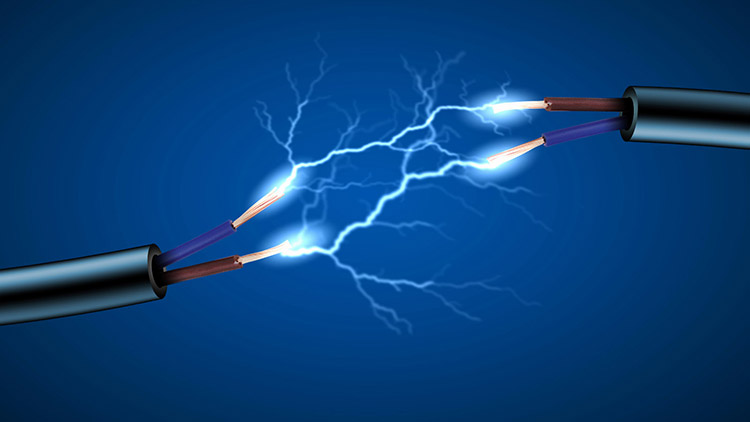
18th December 2015 by Jason Vincent
A Guide to CE Marking Products as a Manufacturer – Low Voltage Directive
This post is part of a series. If you have come across this directly, we recommend you read through the following posts for context and background:
– Introduction – What is CE marking, and does it apply to you?
– Getting Started – an Overview of the CE Marking Process
In the first post (Introduction) we listed the directives that need to be considered and may apply to the product being manufactured. We will now have a closer look at some of these directives (those that are highlighted in the original post) and we will start with looking at the Low Voltage Directive (DIRECTIVE 2006/95/EC)[3] in the context of CE Marking. I have included a useful document[4] which is a guideline on the application of this directive – it is by no means an exhaustive document, but does provide great guidance. We will make reference to parts of this document throughout this post.
Please note that simply because a product falls under the Low Voltage Directive does not imply that it must only comply with that directive. Manufacturers must ensure conformity with all relevant directives.
Scope of the Low Voltage Directive
“The Directive applies to all electrical equipment8 designed for use with a voltage rating of between 50 and 1000 V for alternating current and between 75 and 1500 V for direct current. Voltage ratings refer to the voltage of the electrical input or output, not to voltages that may appear inside the equipment […] Battery operated equipment outside the voltage rating is obviously outside the scope of the Low Voltage Directive”.
So in the case of a vending machine, operating on a 12v DC loop, but with a 240v power supply, the machine still needs to comply with the Low Voltage Directive, even though the power supply itself may be a standard issue component that is CE marked itself, and the voltage risk may be minimal.
“In general, the scope of the Directive includes both electrical equipment intended for incorporation into other equipment and equipment intended to be used directly without being incorporated.”
Since our series of posts is targeted at manufacturers of products specifically, we have not enumerated all the individual exclusions from the directive, such as individual components that in and of themselves can not be accurately assessed for conformity before being incorporated in to a larger assembly. For further information about this, I recommend you read through the guidance document, or the directive itself.
As with most directives, these can be complied with either by the use of Harmonised Standards (standards specific to certain products and industries, and consistent across the European Union) or by the manufacturer showing compliance with the relevant requirements themselves. In the case of the former, by showing compliance with the harmonised standards, manufacturers can be considered Presumptively Compliant, whereas if they choose to demonstrate compliance themselves, the onus is on them to demonstrate this in the technical documentation explicitly.
What does the directive cover?
If you jump down to Annex I of the Low Voltage Directive[3], you will see a list of the safety elements that must be covered by the conformity assessment. You will see that the principal concern is the safety of persons and animals, and the manufacturer needs to ensure that they are taking the necessary measures to ensure such safety.
If we look at the last requirement:
“that the electrical equipment shall not endanger persons, domestic animals and property in foreseeable conditions of overload.”
It becomes clear that whilst the product needs to perform as per its intended use, it also needs to handle conditions of overload whilst preventing damage or harm to anyone who may come into contact with it. In the case of a vending machine, your conformity assessment may cover conditions such as the following:
- What happens if there is an electrical surge that is not protected in the mains outlet?
The approach to this could be as simple as the incorporation of a replaceable fuse on the main circuit board, that is easily accessible and rated adequately. By selecting a fuse with adequate rating, manufacturers can ensure that any minor power irregularities that should not adversely impact the product or present a danger to persons would not result in a blown fuse, whereas any conditions that could present a risk to either individuals or to the product itself would result in a blown fuse. The approach can be documented as above, whereas tests should be carried out with pre-determined components to be used in manufacturing to demonstrate compliance.
- What are the implications of a jammed product that fails to vend successfully?
This is a common occurrence, and depending on the vending machine this could mean that the dispensing mechanism is continually trying to dispense a product. The result of such a case could be that once the motor is stalled and as a result pulling it’s maximum stall current, it could overheat over time. Even a low voltage, low current motor could over time become incredibly hot, resulting in a danger to both technicians and property (potentially even leading to a fire).
Resolving such an issue might involve design changes to identify a ‘jammed’ product. This could be mechanical (i.e. did the mechanism return to it’s starting position successfully) or electrical (i.e. is the motor pulling more current than it should, and if so for how long?). Addressing the concern in either way must necessarily lead to an outcome where a stalled motor will have it’s power cut off, to prevent any risks from developing.
- How is the mains power cable connected to the machine, and how is it shielded from external damage?
In the case of Aeguana’s wall mounted vending machine, the power cable can adopt one of several end positions. It could either be connected directly to a fuse spur in the wall behind the machine, or it might be a cable that is channeled away from the machine. However, because of the design of the removable cover, there are additional considerations that must be factored in to the design process. What happens if the cover is damaged in transit, or by a service engineer, and it is then in direct contact with a cable? What would happen if another service engineer subsequently closed the cover excessively hard, potentially cutting in to the mains cable directly? That could result in the entire external surface of the machine becoming conductive and electrified. Identifying such a risk is not straightforward.
It requires careful thought about the different points of failure, and even unpredictable human behaviour. Solving such a risk could involve a range of operations – from protecting the enclosure the cable comes in to contact with, to specifying a higher grade of electric cable that is abrasion resistant, to even issuing servicing guidelines and requiring inspection on every service.
There are additional risks that must be considered, and this is a process that should be undertaken both during the design and the manufacturing stages, in order to minimise disruption to the engineering process and maximise security to consumers and the general public.
What should the Technical Documentation contain?
By jumping across to Annex IV of the Low Voltage Directive you can see exactly what type of procedure is expected, and how this should be carried out. More specifically, this details what information needs to be compiled in the Technical Documentation. As you can see, the Low Voltage Directive can be complied with using ‘Internal Production Control’, meaning that the manufacturer “ensures and declares that the electrical equipment satisfies the requirements of [the] Directive” and the manufacturer “must affix the CE marking to each product and draw up a written declaration of conformity”.
The Technical Documentation must contain the following:
- a general description of the electrical equipment
- design and manufacture drawings plus diagrams of components, subassemblies, circuits, etc.
- descriptions and explanations needed to understand the above mentioned drawings and diagrams plus the operation of the electrical equipment,
- a list of the standards used, in full or in part, and a description of the solutions employed to meet the safety aspects of this directive when standards have not been applied,
- the results of design calculations and of checks carried out, etc.,
- test reports
Overlaps with other Directives
It’s important to identify whether there is an overlap between the Low Voltage Directive and any other directives that the product needs to be compliant with. One interesting directive to touch on (which we will cover in more depth later) is the Machine Directive (DIRECTIVE 2006/42/EC2). Since 29th December 2009 the Machinery Directive has been revised to provide greater clarity on the line between the Machinery Directive and the Low Voltage Directive. There are a number of categories that are explicitly excluded from being covered under the Machinery Directive, and these are now based on product categories. Generally speaking, they are as follows:
- household appliances intended for domestic use
- audio and video equipment
- information technology equipment
- ordinary office machinery
- low-voltage switchgear and control gear
- electric motors
The first of these is probably the most ambiguous. It is based on the intended product use and essentially covers products that are used by consumers in a domestic environment.
If we think back to our vending machine example, it is clear that it will not fall in to any of these categories. As such, it is now the manufacturers responsibility to ensure compliance with the Machinery Directive and the Low Voltage Directive. However, there is an overlap that I will explore further. Note the following from the Machinery Directive:
1.5.1. Electricity supply
Where machinery has an electricity supply, it must be designed, constructed and equipped in such a way that all hazards of an electrical nature are or can be prevented. The safety objectives set out in [the Low Voltage Directive] shall apply to machinery. However, the obligations concerning conformity assessment and the placing on the market and/or putting into service of machinery with regard to electrical hazards are governed solely by this Directive.
What this means is that if a product falls under the voltage requirements of the Low Voltage Directive, the manufacturer must ensure compliance with the directive, but the Declaration of Conformity should make reference to the Machinery Directive, and not the Low Voltage Directive.
There are a number of other overlaps that are explored further in the guidance document linked under [3] below. I recommend you read through this if there is any ambiguity after the introductory post, about which directives your product may fall under.
References and additional reading:
[1] http://ec.europa.eu/enterprise/policies/single-market-goods/files/blue-guide/guidepublic_en.pdf
[2] https://www.gov.uk/ce-marking
[3] http://eur-lex.europa.eu/LexUriServ/LexUriServ.do?uri=OJ:L:2006:374:0010:0019:EN:PDF
[4] http://ec.europa.eu/enterprise/sectors/electrical/files/lvdgen_en.pdf
[5] http://ec.europa.eu/enterprise/sectors/electrical/documents/lvd/index_en.htm




